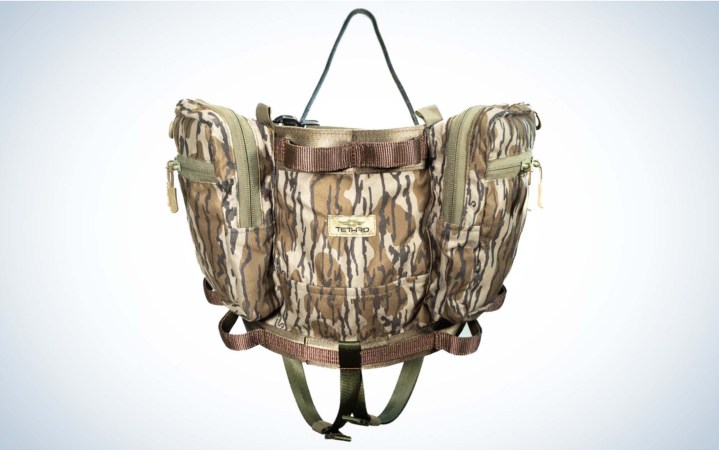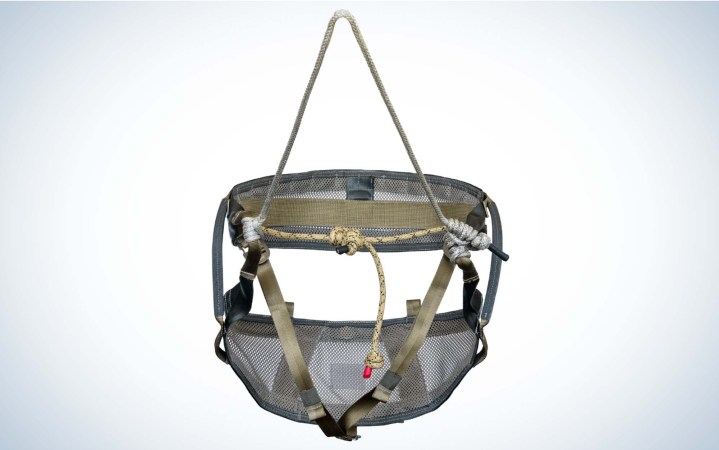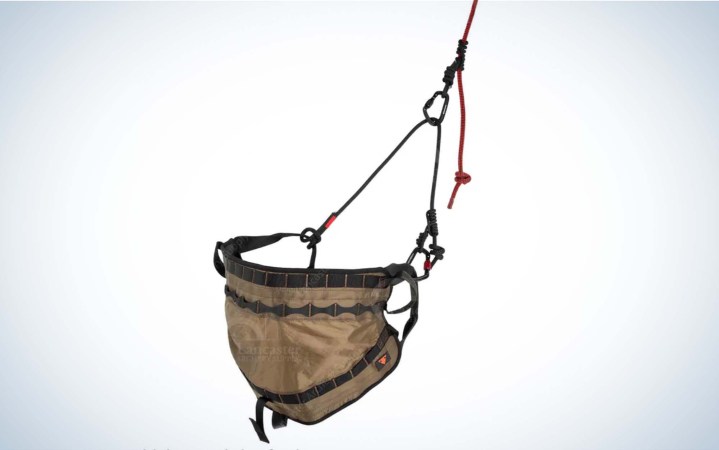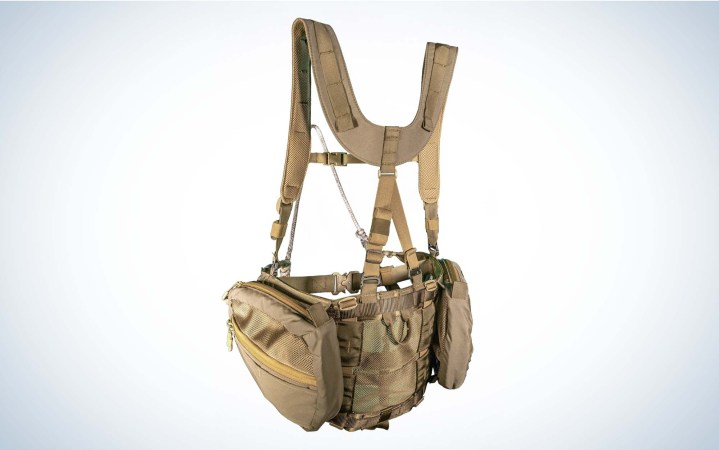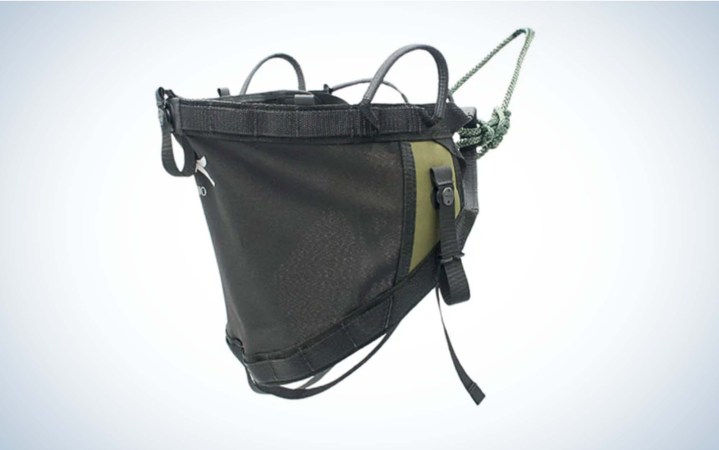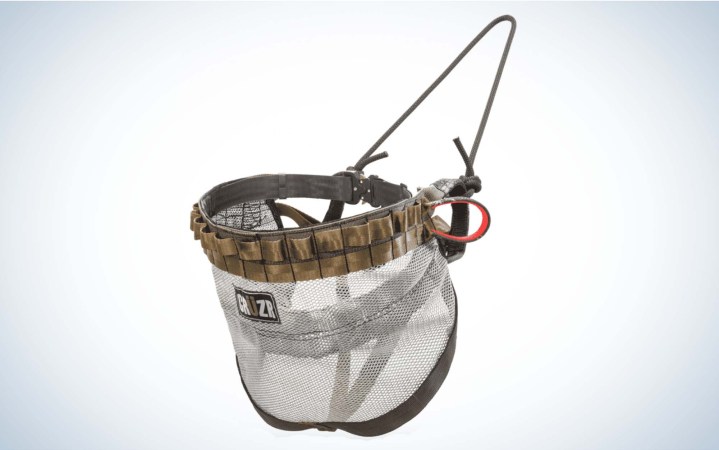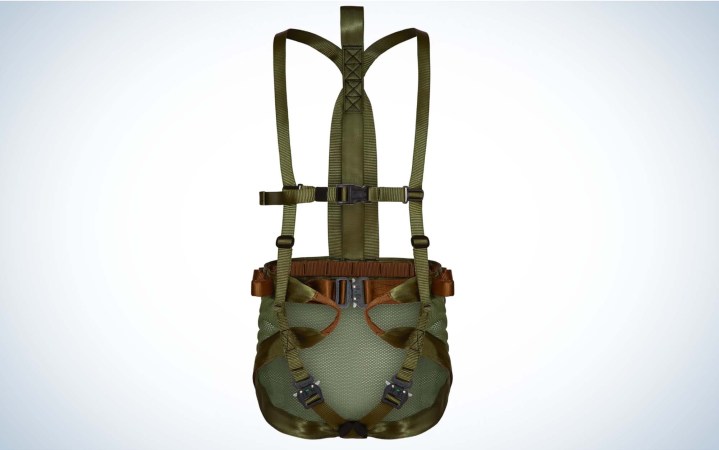The Best Tree Saddles of 2024, Tested and Reviewed
We may earn revenue from the products available on this page and participate in affiliate programs. Learn More ›
Saddle hunting has boomed in popularity, as whitetail hunters embrace a minimalist mindset to save weight and bulk compared to traditional treestand options. Manufacturers and brands are in an arms race as they aim to offer lightweight and modular solutions to meet the demands of the modern mobile hunter. This bodes well for anyone hoping to upgrade their saddle kit, but the seemingly endless options can be intimidating to navigate. I tested nine of the best tree saddles on the market to narrow your search.
- Best Overall: Timber Ninja Black Belt Ultimate
- Best Value: Tethrd Grit Workhorse Saddle Kit
- Best Single Panel: Trophyline Venatic
- Best Two-Panel: Latitude Method 2
- Best Expandable: Tethrd Ultralock
- Best Lightweight: Timber Ninja Black Belt Nano
The Best Tree Saddles at a Glance
| Saddle | Price | Style | Comfort Score | Weight |
| Timber Ninja Black Belt Ultimate | $410 | Two Panel | 5 | 1 pound 15 ounces |
| Tethrd Grit | *$300 | Single Panel | 4.5 | 2 pounds 5 ounces |
| Trophyline Venatic | $300 | Single Panel | 4.9 | 1 pound 10 ounces |
| Latitude Method 2 | $300 | Two Panel | 4.75 | 1 pound 12 ounces |
| Tethrd Ultralock | $430 | Expandable | 4.9 | **3 pounds 2 ounces |
| Timber Ninja Black Belt Nano | $330 | Two Panel | 4.5 | 1 pound 4 ounces |
How I Tested The Best Tree Saddles
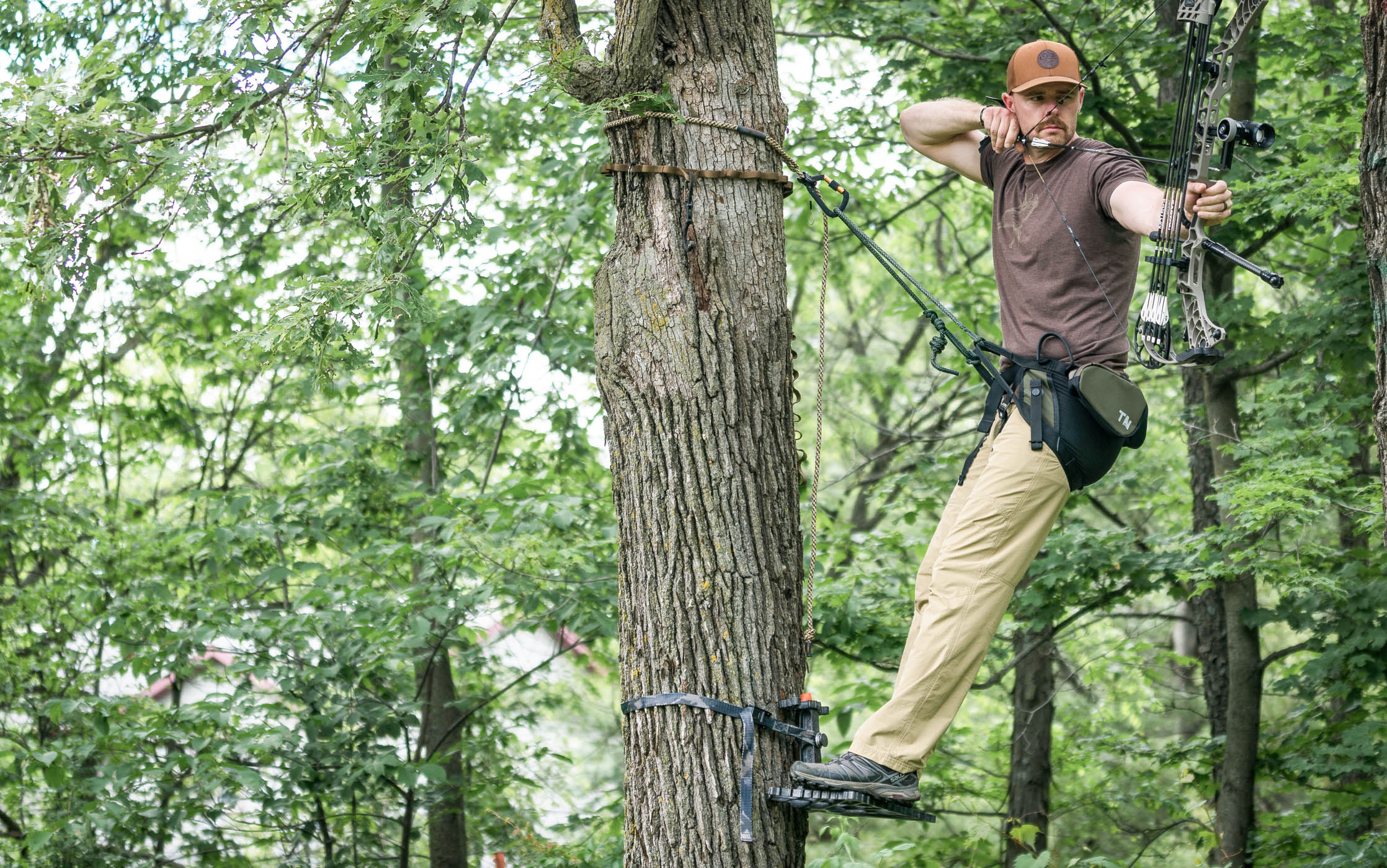
Photo by Erik Barber
I’ve been hunting exclusively from a tree saddle since 2018, when I was lucky enough to kill a beautiful 8-point buck on opening day of Wisconsin’s archery season — I haven’t looked back since. I was immediately fond of a saddle’s lighter weight and smaller footprint compared to my old hang-and-hunt setup.
I’ve used saddles everywhere, from cottonwood-choked river bottoms in western whitetail country to the classic hardwoods of the midwest. I’ve tinkered with my setups over the years, adding DIY solutions for hauling sticks, platforms, and attaching extra gear.
I say all that because I used my experience hunting and experimenting with saddles to create my test methodology.
I evaluated saddles based on the features that are most important to me when buying one. This includes comfort, features, weight, and price. All saddles were completely kitted with dump pouches, ropes, and carabiners necessary to climb a tree. I spent at least one hour at hunting height, taking notes regarding comfort, hip pinch, how the bridge moved through loops as I pivoted my hips, and how the features advertised by the manufacturer translated to real-world use.
Comfort
I climbed 17 feet into a 15-inch diameter white oak using four climbing sticks with each tree saddle. Once at hunting height, I “hung out” (bad pun, I know) for one hour. I spent at least 30 minutes leaning and 30 minutes sitting with my knees bent and resting against the tree. I graded each saddle on a score of 1 to 5, with 5 being the most comfortable.
Features
It’s tricky to decipher marketing slang and understand how special features translate into the bowhunting world. I kept a list of all special features brands listed on each respective product and noted the functionality.
Weight
While all saddles are lighter than any of the best hang-on treestands on the market, it’s important to be mindful of the additional accessories, like platforms, extra ropes, and carabiners, that are required to saddle hunt. This can quickly add up and lead to a saddle kit that weighs as much (or more than) a lightweight treestand. With that in mind, I noted any saddle as “heavy” if it weighed more than 2 pounds without additional accessories and noted it in the cons section. Saddles were weighed with a digital scale that accurately measured to the nearest hundredth ounce.
Price
Saddles are offered at a wide range of prices. Of the models featured in this test, the most expensive was $430, and the most affordable was $150, yielding a mid-price of $309. It’s important to consider what’s included with your purchase to fully understand the value of each product. In this test, anything more expensive than $309 was listed as “expensive” and noted in the cons section.
The Best Tree Saddles: Reviews and Recommendations
Best Overall: Timber Ninja Black Belt Ultimate
Key Features
- Two-panel
- Weight: 1 pound 15 ounces
- MOLLE Webbing: Two rows, one on each panel
- Waist Belt: Webbing with magnetic buckle
- Leg Straps: Webbing strap with G-hook
- Bridge Type: AmSteel with rubberized bridge loops
- Special Features: Magnetic platform holder, built-in Mud Flap stick carrier panel, and two magnetic stick haulers
- Comfort Score: 5
- Price: $410
Pros
- Most comfortable saddle in the test
- Magnetic waist buckle is easy to operate
- Magnetic stick haulers quickly and easily attach sticks to saddle while climbing
- Magnetic platform hauler eliminates a DIY alternative
Cons
- Expensive
The Timber Ninja Black Belt Ultimate sets itself apart from an already impressive lineup of saddles featured in the test because of its comfort and features.
As soon as I reached hunting height and leaned into the saddle, I was impressed by its comfort. I didn’t feel any hip pinch during the test, which solidified the Ultimate as the most comfortable tree saddle in the field while still producing a modest, sub-2-pound weight rating.
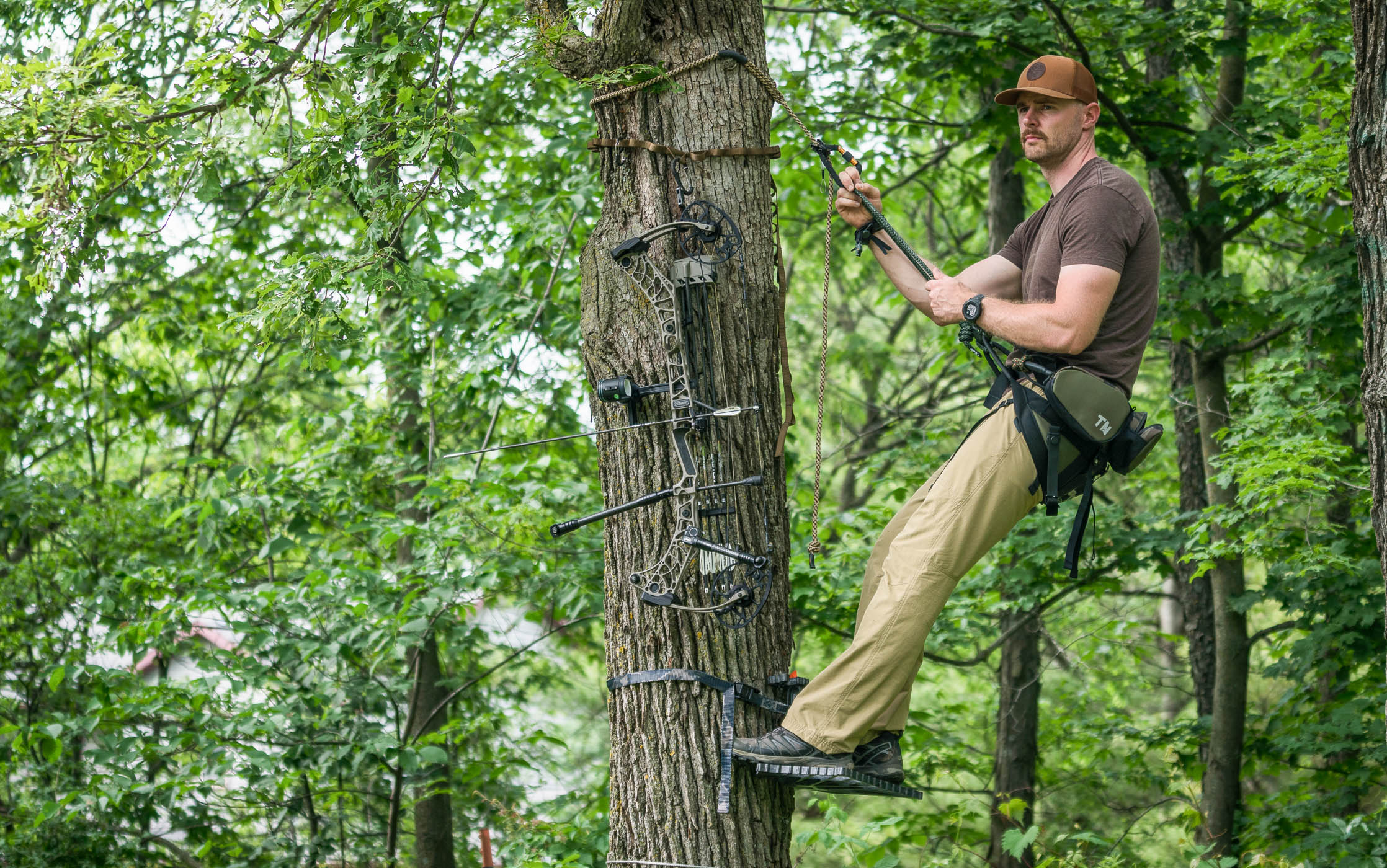
Photo by Erik Barber
I liked the magnetic components used throughout the saddle, which included a waist buckle and stick and platform haulers. Not only is the waist belt magnetic, the center buckle can be set offset to one side, which eliminates stacking buckles on top of each other. The built-in Mud Flap can carry up to four lightweight climbing sticks, which I especially appreciate for quick, early-season hunts when I don’t want to lug a backpack. The rubberized coating on the bridge and lineman loops allow you to cinch down the ropes for a fine-tuned, non-slip fit.
While pricey, Timber Ninja also offers a full lineup of premium accessory bags. The Ultimate integrates with streamlined saddle bags (right and left specific) and can even accept an additional lumbar pouch. All Timber Ninja pouches are water resistant and feature a high-visibility orange interior to help find small objects in low-light scenarios.
Best Value: Tethrd Grit Workhorse Saddle Kit
Key Features
- Single panel
- Weight: 2 pounds 5 ounces
- Saddle bags integrated into the saddle
- Waist belt: webbing with quick connect buckle
- Leg straps: webbing with quick connect buckle
- Bridge type: adjustable AmSteel
- Special features: includes tether, lineman rope, and back support recliner in the box, integrated zippered pockets built into the waist belt, and adjustable AmSteel bridge
- Comfort: 4.5
- Price: $300
Pros
- Best value in the lineup
- Includes tether, lineman rope, and back support recliner
- Quiet fabric offered in Mossy Oak Bottomland or Realtree APX
Cons
- Bridge can slip in loops
- Heavy
The Grit Workhorse by Tethrd is by far the best value in saddle hunting. In addition to a highly capable saddle, you’ll also find an 11mm lineman rope, 11mm tether, and recliner backband included in the box — a $140 value that most manufacturers require you to purchase separately. While the value is incredible, don’t be fooled, the Grit Workhorse isn’t just a beginner’s tree saddle. While it’s certainly an ideal option for anyone new to saddle hunting, it’s also highly capable for a seasoned vet.
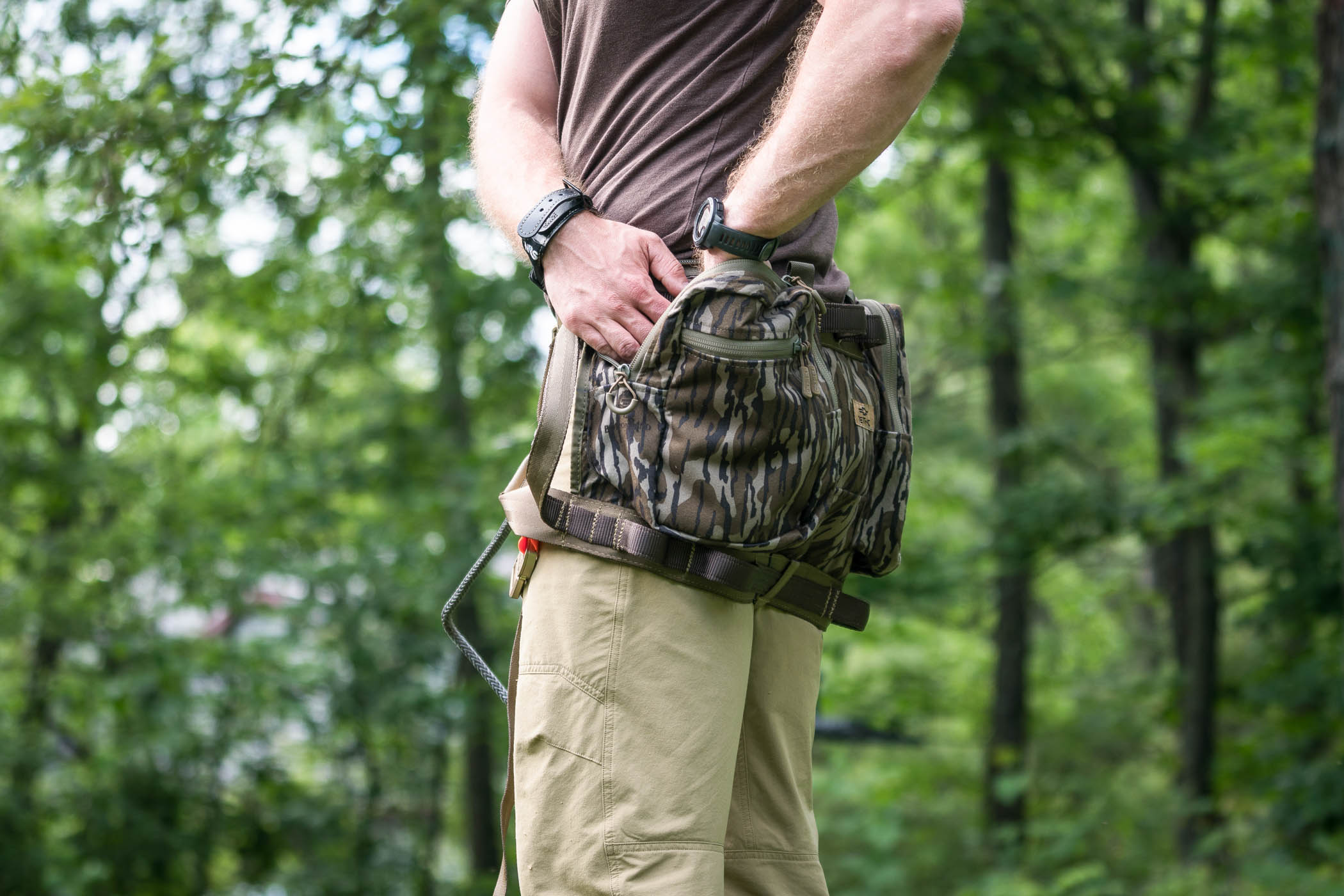
Photo by Erik Barber
The integrated zippered pockets are built into the waist belt and provide plenty of storage volume while maintaining a sleek profile that’s easily operated by one hand. The pockets provide plenty of room for the included 11mm rope and tether, recliner, and additional accessories like neck gaiter, headlamp, or whatever small items you can think of. Even when fully loaded, the pockets fit snug against your hips to eliminate unwanted bulk.
The material is incredibly soft and quiet, and resists abrasions. While the Grit Workhorse weighs over 2 pounds, it’s important to understand that weight includes the pockets. For context, the Timber Ninja Black Belt Ultimate weighs 2 pounds 7 ounces with a lumbar pocket and two side pockets.
Read Next: The Best Hunting Arrows
Best Two-Panel: Latitude Method 2
Key Features
- Two-panel
- Weight: 1 pound 12 ounces
- MOLLE webbing: 2 rows – 1 on waist belt on top panel, 1 on top of bottom panel
- Waist belt: prusik knot
- Leg straps: removable webbing strap with G-hook
- Bridge type: AmSteel with rubberized bridge loops
- Special features: metal-free construction, magnetic Quick-Connect System attaches panels while on the move
- Comfort: 4.75
- Price: $300
Pros
- Lightest 2-panel saddle in the test
- Metal-free design makes it incredibly quiet
- Quick-connect magnets attach panels while on the move
- Magnets deploy easily while in the tree
- Affordable
Cons
- Would prefer open-faced G-hooks
At 1 pound 12 ounces, the Latitude Method 2 is the lightest two-panel saddle in the test. Its combination of comfort, weight, and intentional features make it one of the best two-panel tree saddles.
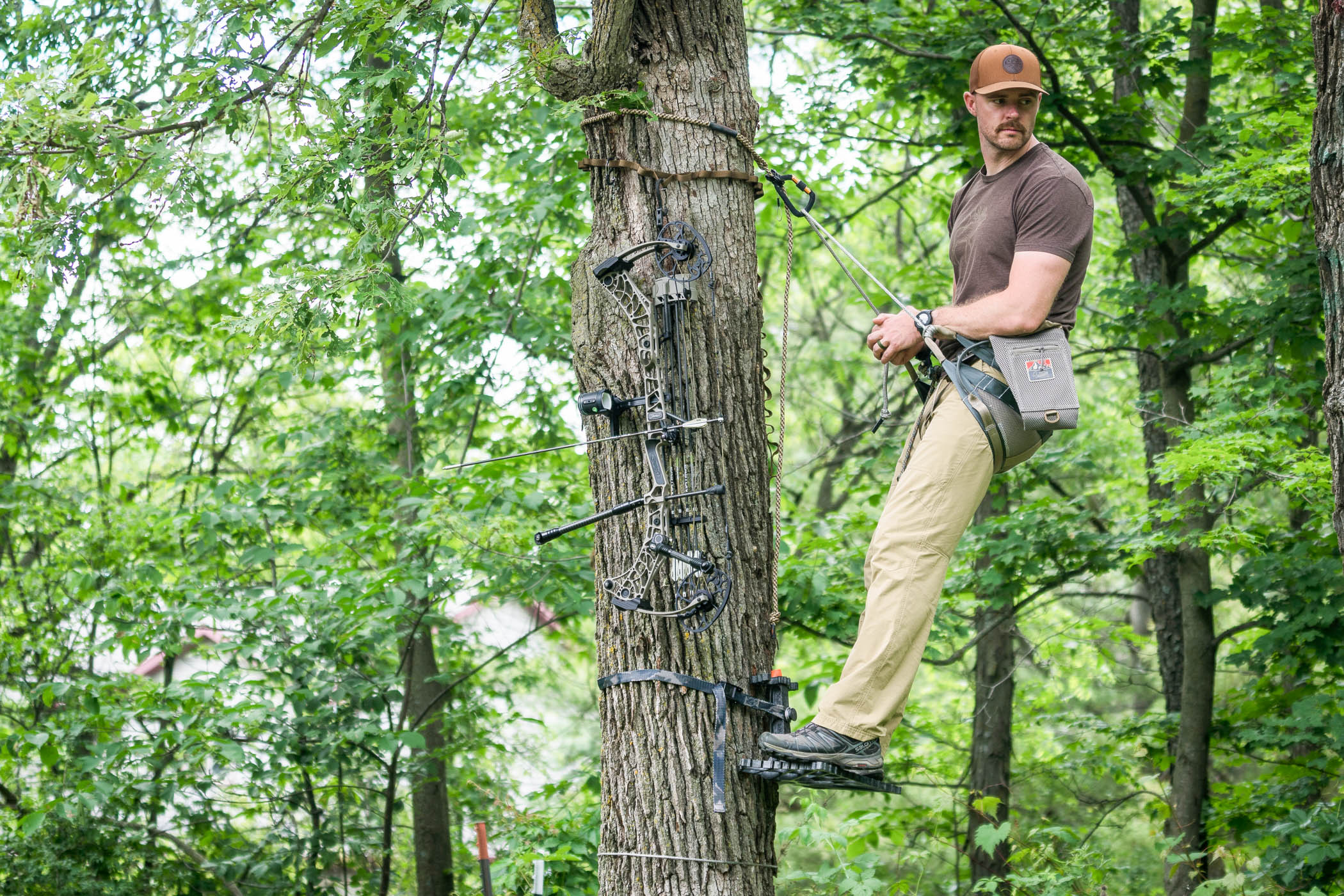
Photo by Erik Barber
The Method 2 uses a metal-free construction that results in a lightweight saddle that’s deadly quiet. Latitude went with a prusik knot in the waist belt to eliminate the need for more traditional ADF Raptor buckles, commonly found in other saddles. I immediately took notice of the lack of any buckle system, and was hesitant from the start. However, I found the prusik knot easy to use and it even helped me dial in the fit. The knot allowed me to make micro adjustments without tightening or loosening a waist belt. I’d especially appreciate this when adding/removing layers on long sits with variable weather conditions during the rut. The leg straps on the Method 2 are removable, which adds flexibility to those seeking a minimalistic design.
When you’re on the move, the bottom panel tucks beneath the top panel and stays solidly in place thanks to an easy-to-use magnet, which Latitude calls the Quick Connect System. This gives you the comfort and mobility of a single-panel saddle, but with the added comfort two-panel saddles are known for.
At $300, I wouldn’t call the Method 2 a “budget-friendly” saddle, but the value far exceeds its price point.
Best Single Panel: Trophyline Venatic
Key Features
- Single panel
- Weight: 1 pound 10 ounces
- MOLLE webbing: two rows, on constructed of traditional MOLLE plus an additional rigid rubber design
- Waist belt: webbing with Raptor buckle
- Leg straps: webbing with Raptor buckle
- Bridge Type: Adjustable 33.38-inch rope bridge (polyester jacket over stranded nylon core)
- Special Features: Rubberized inside back panel to prevent slipping, free-floating waist belt sleeve, bridge garage to secure bridge during transport, seat strap to compress seat while walking, and rubberized MOLLE attachment points
- Comfort: 4.9
- Price: $300
Pros
- Waist belt doesn’t slip once set due to the rubberized interior
- Breathable ripstop nylon material
- Rubberized MOLLE attachment points
- Waist belt sleeve keeps your buckle centered
- Comfortable
- Made in USA
Cons
- Wish the bridge didn’t need a carabiner to attach
- Bridge isn’t made of AmSteel
The Trophyline Venatic is thoughtfully designed, integrating many tech features unique to the Trophyline lineup. A rubber-coated interior locks the waist belt securely in place to eliminate unwanted sliding while walking or climbing. I was instantly fond of the free-floating waist belt sleeve, which allowed me to align the buckle over my belt to prevent any discomfort while sitting. The Venatic integrates a bridge keeper into the waist belt, called Bridge Garage, which stows the bridge out of the way while walking. In addition, the seat strap compresses the material so the saddle doesn’t sag or feel cumbersome during long hikes.
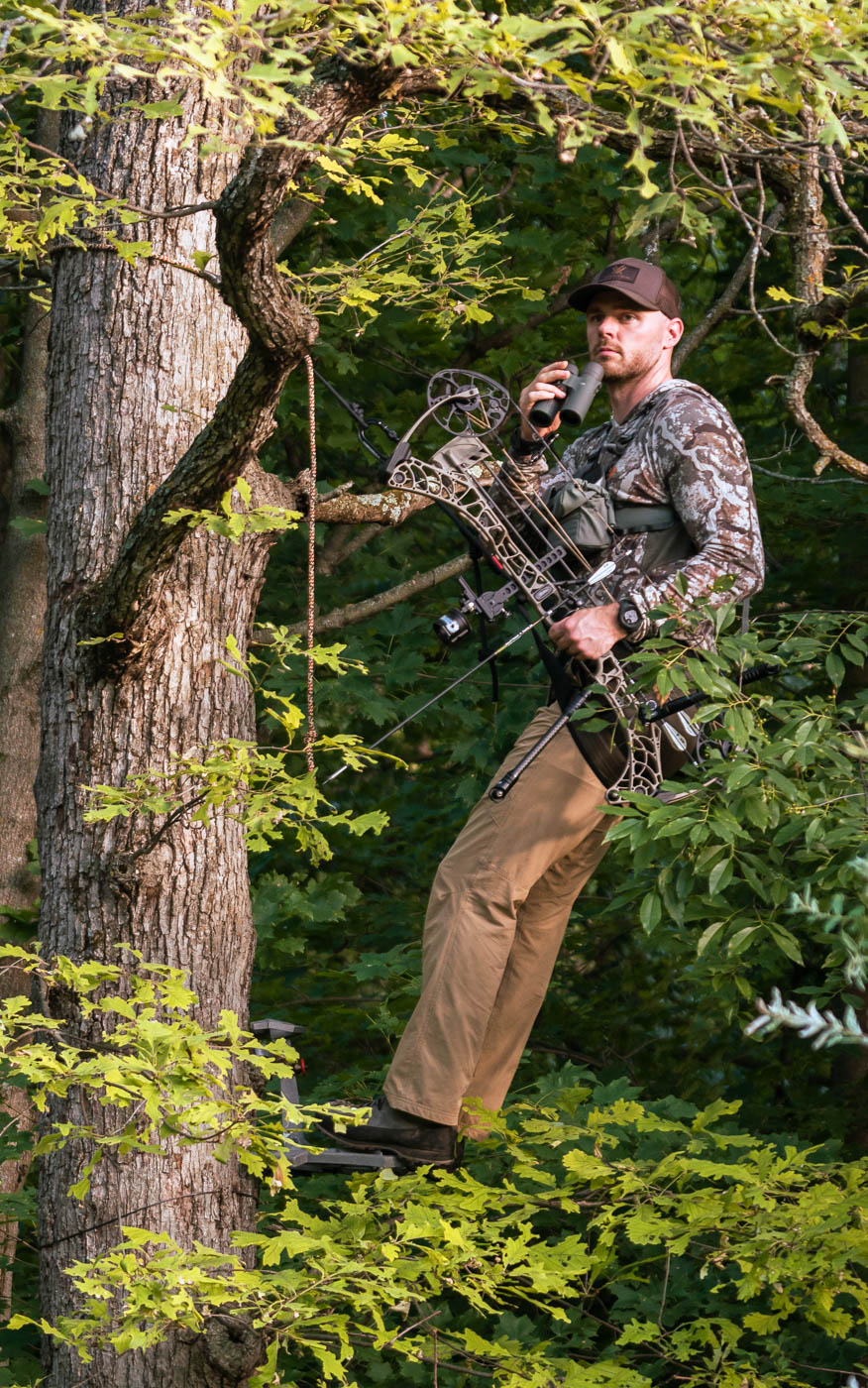
Photo by Erik Barber
The leg straps sit mid-thigh and don’t ride up after a few hours in the tree. I prefer to sit with my knees against the tree when hunting for more than a few hours, and found the Venatic to be incredibly comfortable as it cupped my waist without unwanted pinching.
The bridge requires a carabiner to attach to the saddle, which adds a bit of weight and requires aftermarket stealth stripping to avoid any unwanted noise. I’d prefer an AmSteel bridge over nylon. Despite that, the Venatic is the best single panel on the market.
Best Expandable: Tethrd Ultralock
Key Features
- Expandable
- Weight: 3 pounds 2 ounces
- Integrated pouched sewn into the saddle
- Waist belt: webbing with quick connect buckle
- Leg straps: webbing with quick connect buckle
- Bridge type: adjustable AmSteel
- Special features: expandable design, integrated dump pouches built into saddle, Ultralock Links, Ultralock Haulers, modular yoke, Ultralock Links
- Comfort: 4.9
- Price: $430
Pros
- Comfortable expandable design keeps a low profile when needed, but extends 5.5 inches for added comfort
- Expanding body handles produce easy adjustments
- Oversized, zippered dump pouches are built into design with plenty of storage and one-handed operation
- Adjustable AmSteel bridge accommodates a wide range of positions
- Modular yoke helps redistribute weight
Cons
- Expensive
- Heavy
Serving as a hybrid between single- and two-panel tree saddles, the Tethrd Ultralock sits atop the newly emerging category of expandable saddles. The Ultralock gives hunters the best of both worlds for those who want to avoid adjustable webbing or clips found in two-panel saddles but superior comfort compared to single-panel options. The Ultralock expands to an additional 5.5 inches of material for added comfort by simply grabbing the expanding body handles (located on the bottom of the saddle) and pulling the material down. When stowed away, the Ultralock Links system prevents the saddle from opening up and sagging.

Photo by Erik Barber
The Ultralock comes with convenient zippered dump pouches sewn into the waist belt of the saddle. You have to buy pouches separately for most saddles. The pockets provide lots of opportunities to organize ropes and other small items, such as headlamps and neck gaiters. They even provide enough room for a compact binocular or rangefinder while maintaining a low-profile design, even when full. Since the pockets are integrated, they factor into the Ultralock’s overall weight score, producing the heaviest metric in the field at over 3 pounds. However, if you’d like to save weight (and some cash), you can choose the Ultralock SD (SD stands for stripped down), which weighs 2 pounds 1 ounce and does not feature integrated pockets. If you go that route, you can choose any of the pockets Tethrd offers and configure your Ultralock however you’d like.
They say comfort comes at a price, and in the case of the Ultralock, that mean you’ll pay a slight weight penalty. However, I found the included modular yoke system to drastically reduce the felt carry weight by distributing it across my shoulders and upper body. I’d highly recommend anyone using the Ultralock to take advantage of the yoke.
Best Lightweight: Timber Ninja Black Belt Nano
Key Features
- Two-panel
- Weight: 1 pound 4 ounces
- MOLLE Webbing: One row on the top of the panel and one row on the bottom of the panel
- Waist Belt: Webbing with magnetic buckle
- Leg Straps: Webbing strap with G-hook
- Bridge Type: AmSteel with rubberized bridge loops
- Special Features: Magnetic platform holder, built-in Mud Flap stick carrier panel, and two magnetic stick haulers
- Comfort: 4.5
- Price: $330
Pros
- Lightest saddle in the test
- 4-way stretch material
- Magnetic waist buckle is easy to operate
- Magnetic stick haulers quickly and easily attach sticks to saddle while climbing
- Magnetic platform hauler eliminates a DIY alternative
- Rubberized bridge and lineman’s belt loops provide non-slip surface for ropes to bite
- Packs down to the size of a Nalgene bottle
Cons
- Price
Weighing in just over 1 pound, the Timber Ninja Black Belt Nano is the lightest tree saddle on the market. The Nano uses a four-way stretch material that doesn’t constrict movement, making it a great option for public land hunters with long hikes ahead of them. This unique material allows you to wear the saddle at or above your waistline and stretch it over your glutes for a comfortable, tailored fit. I found myself positioning other single panel saddles below my beltline, which isn’t as comfortable, so this was a welcomed surprise. If you’d rather stow it in your backpack while walking to or from the tree, the Nano compresses to roughly the size of a Nalgene bottle, which easily fits in a water bottle pocket to free up space in the main compartment of your backpack.

Photo by Erik Barber
The Nano uses many of the same features found on the Ultimate from Timber Ninja, but in a smaller, single-panel configuration. I especially liked the rubberized bridge and lineman’s belt loops, which allow you to cinch down your ropes and rest assured they won’t slide as you rotate your hips or adjust your position. The magnetic components, including stick and platform haulers and waist belt, are unlike anything else on the market. I attached the stick haulers to my sticks before heading to the woods, making it very simple to quickly and silently clip them onto my waist belt before climbing the tree.
The Rest of the Field
CRUZR XC
Key Features
- Expandable
- Weight: 1 pound 14 ounces
- MOLLE webbing: Two rows on top, one loose and one tight
- Waist belt: ADF Raptor Buckle
- Leg straps: webbing strap with quick connect buckle
- Bridge type: adjustable AmSteel
- Special features: Xpansion Chamber mesh pleated panel, gray or black color options
- Comfort: 4.5
- Price: $260
Pros
- Affordable
- Breathable mesh fabric
- Expandable body provides additional comfort
- Multiple MOLLE offerings to accept a wide range of accessories
- Dual adjust waist belt
Cons
- Expandable body sags at times
At $260 the CRUZR XC hits above its weight class when it comes to value. The expandable body extends to cover well below your glutes, making it very comfortable regardless if you prefer to lean or sit while hunting. Two rows of MOLLE accommodate nearly any accessory — the top row is loose and intended for clipping carabiners or other accessories, while the second row is tight and built for aftermarket MOLLE accessories.
The CRUZR XC has a dual adjustable waist belt, which helps tailor a perfect fit and avoid stacking your waist buckle on top of your belt. The AmSteel bridge bites the loops well and doesn’t adjust when shifting positions or rotating my hips in the tree. While the expandable body is comfortable (especially for sitting), I found it prone to sagging while walking, earning its only con.
XOP Mondo
Key Features
- Single panel
- Weight: 2 pounds 3 ounces
- MOLLE Webbing: One row on top of the panel
- Waist Belt: Webbing with quick connect buckle
- Leg Straps: Webbing with quick connect buckle
- Bridge Type: Friction hitch climbing ropes
- Special Features: Doubles as ASTM certified treestand full body fall arrest system
- Comfort: 3.7
- Price: $150
Pros
- Affordable
- Doubles as an ASTM Certified Treestand Full Body Fall Arrest System
- Hybrid design is versatile, ideal for anyone looking for a treestand safety harness that can also operate as a saddle
- Includes all ropes and carabiners
Cons
- Weight
- Would prefer an AmSteel bridge
Serving as a certified treestand full body fall arrest system and saddle, the XOP Mondo is the only hybrid saddle in the field. At $150, the Mondo is on par with what you’d expect to pay for any premium full body treestand harness (Hunter Safety System Pro Series at $170, or HAWK Elevate Lite at $100, for example), but also provides the flexibility to be used as a saddle. This unique style is ideal for someone curious about saddle hunting but unsure if they want to fully commit. The Mondo is a comfortable and capable treestand harness, but affords the flexibility of serving double duty as a tree saddle. It even includes all the necessary ropes and auto-locking carabiners you need to start climbing.
I’d prefer an AmSteel bridge over the included friction hitch climbing ropes. The integrated MOLLE fits looser than most flat MOLLE webbing, which limits the number of accessories the Mondo will accommodate. The Mondo suffers in comfort, specifically from the treestand-style yoke that consistently pulled the saddle high on my lower back, which I found myself fighting to adjust. As a result, it earned a 3.7 rating, the lowest in the test.
How to Choose a Tree Saddle
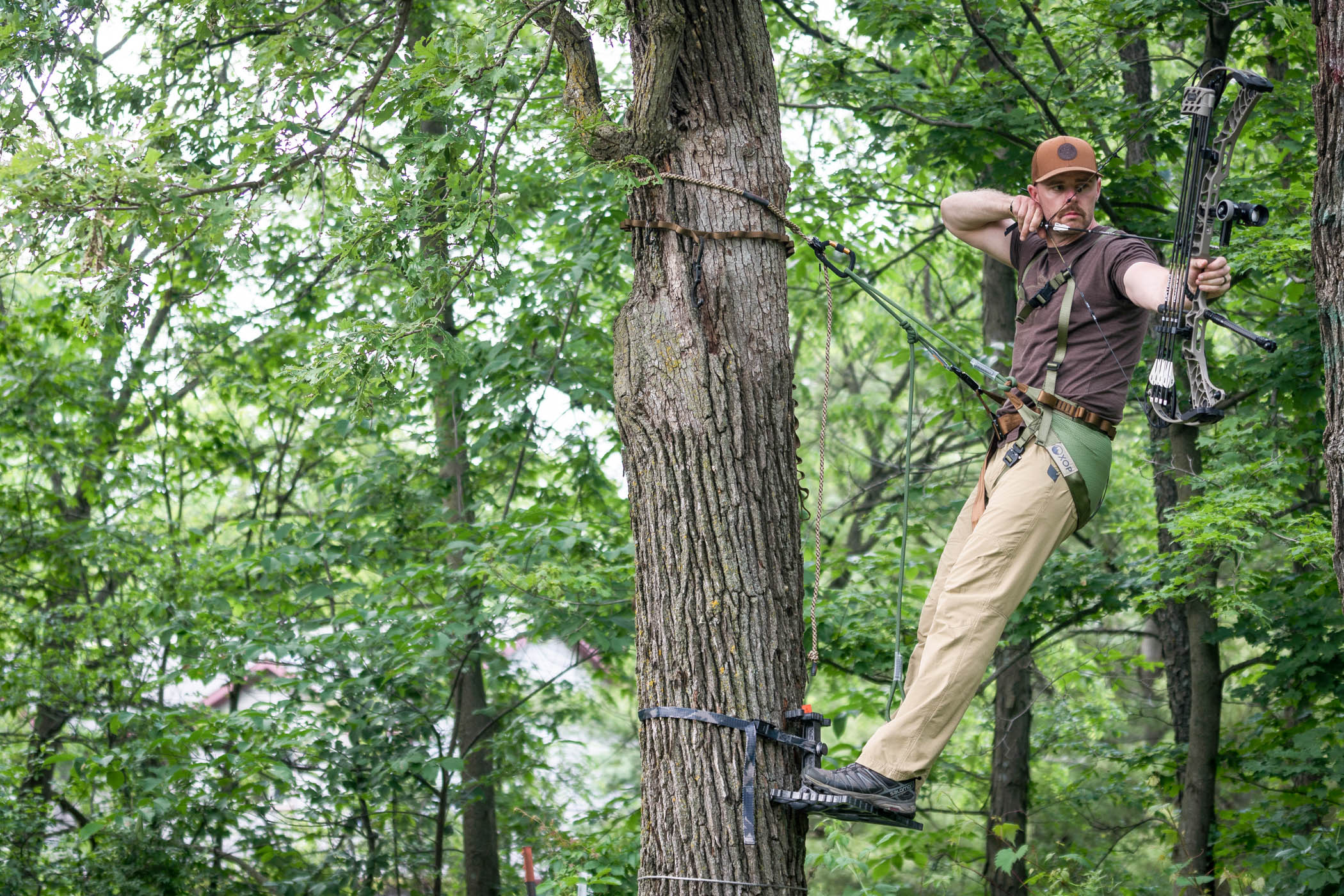
Photo by Erik Barber
Single vs Two Panel Tree Saddles
Single-panel tree saddles are simple, utilizing a single piece of fabric without moving pieces. They’re easy to use and stow away nicely in a backpack, ideal for those who prefer to pack their saddle instead of wearing it while walking to the tree. Double-panel saddles, as the name implies, use two separated panels to provide a tailored fit. While a bit bulkier than single panels, a double-panel saddle provides incredible comfort, especially for those who like to sit while in the tree. Hybrid saddles utilize an expandable body to provide extra material when seated, but stows away while you’re on the move or leaning in the tree.
Hunting Style
Consider the type of hunting you do most frequently and buy a saddle that meets your needs. If you’re a minimalist that hikes far from the road and prefers to stuff your saddle in a backpack, a single panel is a great fit. A double-panel is ideal for those who prioritize comfort, especially those who may spend dark-to-dark in the tree. Hybrid options are ideal for anyone who wants a do-it-all system and doesn’t mind lugging a bit of extra weight.
Tree Saddle Features
Saddles are loaded with features to make your hunt easier. While things like integrated stick or platform carriers are nice, they come at a price. These top-end features are nice, and well worth their price tag. However, if you’re a minimalist or DIY-er, you can customize a more simplistic saddles to accommodate your needs. I’ve used Nite Ize gear ties and S-biners as an affordable, do-it-yourself hack to attach a platform and climbing sticks to my saddle when ascending or descending.
Manufacturer Support
Consider the level of support you’ll receive from the manufacturer when purchasing a saddle. All of the brands featured in this test have responsive technical support and are active on social media, and all responded to my questions in a timely manner. I have no doubt any customer would receive the same level of support, so don’t be bashful with questions.
Final Thoughts on the Best Tree Saddles
We’re in the golden days of saddle hunting, as manufacturers are constantly improving and adjusting their products to meet the demands of today’s mobile hunters with purpose-built saddles. The best tree saddles are quiet, comfortable, and packed with features to help us enjoy our time in the woods. All of the saddles featured in this test fulfill these requirements and will help you hunt more effectively.
- Best Overall: Timber Ninja Black Belt Ultimate
- Best Value: Tethrd Grit Workhorse Saddle Kit
- Best Single Panel: Trophyline Venatic
- Best Two-Panel: Latitude Method 2
- Best Expandable: Tethrd Ultralock
- Best Lightweight: Timber Ninja Black Belt Nano
The post The Best Tree Saddles of 2024, Tested and Reviewed appeared first on Outdoor Life.


